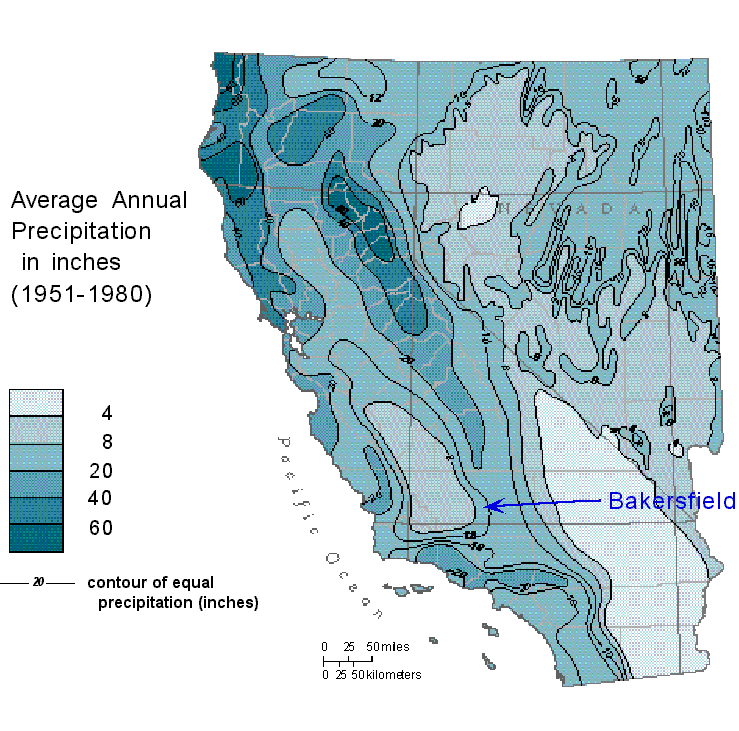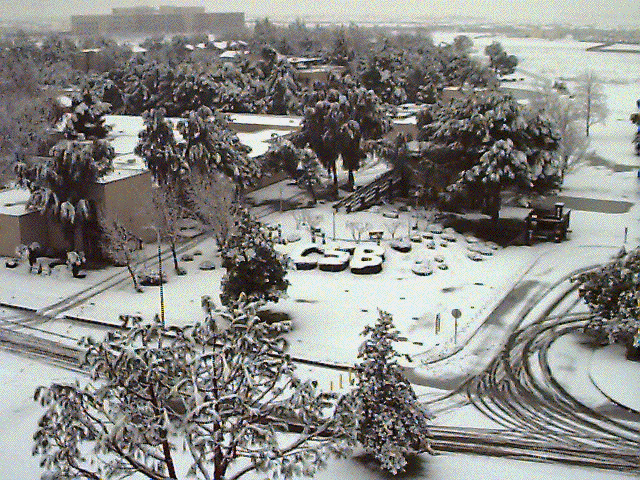|
Bakersfield is one of the fastest growing cities in California with a population of over 250,000 people that qualifies it as the 13th largest city in California and the 88th largest in the United States. It is also the capitol of Kern County - one of the richest agricultural regions in the world, as well as the most prolific oil-producing county in the country. In fact, Kern County agriculture produces more food than most states, and if Kern were a state all its own it would would rank just behind Alaska, Texas and Louisiana as the fourth largest oil-producing region in the entire country. GeographyBakersfield is located in the south end of the great San Joaquin Valley of California at an elevation of 492 feet. Sitting on the west side of the Sierra Nevada Mountains, it is centrally located about 90 miles north of Los Angeles, 90 miles south of Fresno, and 90 miles east of the Pacific ocean, which puts Bakersfield close to a variety recreational and business resources. In fact, you can be basking in the sun at Pismo Beach on the Pacific Coast, rock hunting in the Mojave Desert, downhill skiing in the Sierra Nevadas, or stuck in L.A. traffic just a short two-hour drive from town. HistoryYokuts Indians first settled in the fertile southern San Joaquin Valley some 8000 years ago. In those days, the area was largely swamps and grasslands, rich with wildlife and bordered on the west by a line of oil seeps and tar pits. Spanish Explorers and Missionaries traversed the Los Angeles basin and crossed through Tejon Pass to enter the valley in 1776, and they found the rich soil and abundant groundwater of the southern San Joaquin excellent for growing crops. There was rapid growth in the 1850s and 1860s after gold was discovered in the foothills to the east, and travelers on their way to the gold fields often stopped to feed and water their animals on the banks of the Kern River at Colonel Thomas Baker's alfalfa fields. Because the area was already known to most as Baker's field (and to a few as Baker's swamp), it was named Bakersfield when Baker was appointed in 1869 to lay out the boundaries for a formal township on the south side of the river. With the discovery of the Kern River oil field just north of town in 1899, Bakersfield became a boom town overnight, and the oil industry today shares the spotlight with agriculture as one of the mainstays of the regional economy. ClimateBakersfield has very pleasant weather with an annual average for the last 30 years of about 5 to 6 inches of rain and around 270 days of sunshine a year. However, we did get over 14 inches of rain during the 1997-1998 season, our "El Nino" year (the wettest on record). Summer highs usually top 100 degrees Farenheit about 30 to 40 days a year, and winter lows generally drop below freezing only a few days each year. For the most part, severe thunderstorms, sometimes with high winds and infrequent flooding, are the most threatening weather you might expect. Believe it or not it does snow in Bakersfield occasionally, about once every 30 years. Average Temperatures
(source for above table: Bakersfield Chamber of Commerce)
AgricultureKern County is the most diverse and productive farming area in the world with some 250 different crops that include 30 varieties of fruits and nuts, 40 types of vegetables, and 20 different field crops that yielded over $2.1 billion in 1999, and $4.0 billion in 2008. Listed below are the ten most important agricultural industries, although the ranking of these varies somewhat from year to year.
OilAlthough agriculture is big business in Kern County, oil is even bigger. The petroleum industry provides jobs for about 15,000 people in the county, most of whom live in Bakersfield. All told, Kern County produces 66% of the oil in California, about 10% of the U.S. oil supply, and approximately 1% of the world's total oil production. That works out to about 560,000 barrels of oil per day, which at $12 to $15 per barrel is something like $2.4 billion to $3.0 billion worth of oil every year. In addition, there is cogeneration, which produces electricity as a by-product from steam used in the oil fields. In fact, steam cogeneration from oil fields in the southern San Joaquin Valley produces much of the electricity used in both Kern and Los Angeles counties.
Click here to learn more about the San Joaquin Valley oil industry.
|
|
|||||||||||||||||||||||||||||||||||||||||||||||||||||||||||||||||||||||||||||||||||||||||||||||||||||||||




